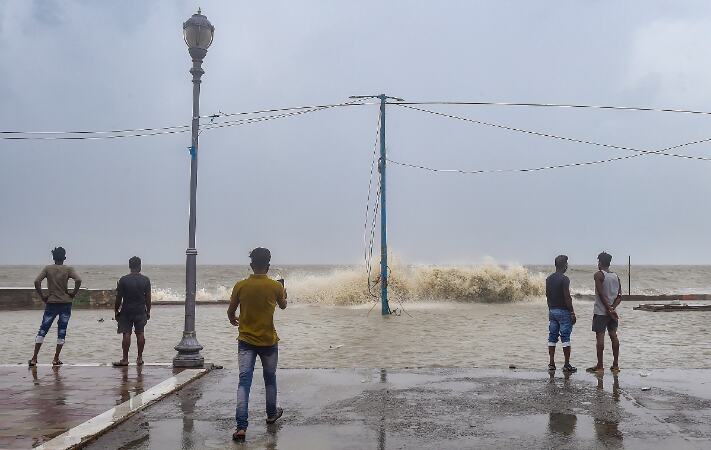No time to waste

Global warming is no more an alien talk. Its threatening impact has come knocking at our doorsteps. The landfall of Yaas and its further progression has killed three people in Odisha and one in West Bengal so far and forced millions to be evacuated from their lands. Cyclones in coastal areas are certainly not a new phenomenon. What is new is their increased frequency and rapid intensification. The cyclones, after making landfall, are giving less time to forecaster and people to prepare for the menace. Experts are attributing these two phenomena to the rising sea surface temperature. The cyclones arising due to the increased surface temperature over the Arabian Sea has made us witness severe cyclones in the past four consecutive years — something that history doesn't approve of. The sea surface temperature over the Arabian Sea, which was normally below 28 degree Celcius in the past decades, now averages above that. Coming back to Yaas, which seems to have been triggered due to developments in the Bay of Bengal on the eastern coast which is comparatively more prone to such disasters. Rapid intensification is emerging as a threat against which long-term preparedness needs to be initiated in immediate future. The cyclone, after its landfall in Odisha, intensified over the West Bengal region and now Jharkhand has been put on alert. Of course, Chief Ministers of Odisha and West Bengal along with the Prime Minister are taking stock of the situation. Immediate measures are being taken. Even the United Nations has come forward to express its resolve to help the suffering population. But certainly, a long-term assessment is something to be looked into more seriously at this juncture. Considering the peninsular landscape of India and its long coastal border, the need for long-term planning becomes even more pressing. Nearly 14 per cent of the Indian population resides in the coastal districts of India. In addition to this significantly huge population, coastal regions are also home to numerous industries laced with chemical and otherwise stocks. In the present context of Yaas, the Haldia district has been repeatedly warned to put necessary safeguard around a large number of industries it is home to. Another major problem is the expanded agricultural land in the cyclone-prone regions. Farmers across the socio-economic strata are losing all they have put for their livelihood in one go. At the same time, the fertility of the soil is degraded significantly. Taking all these problems into account, it is pertinent to ask what safety infrastructure have we set in place to mitigate the impact of such severe cyclones. A National Cyclone Risk Mitigation Project is being worked on since 2011 by National Disaster Risk Management Agency and state governments. Most of the Indian coastal states come under this project but its implementation has not been satisfactory till now. Physical infrastructure was built in Odisha and Andhra Pradesh in the first phase. Among the states included in the second phase, West Bengal has been faring well but the performance of Gujrat, Maharashtra etc. has been below the mark. The infrastructure development under the project includes basic necessities like the building of shelters, improving road connectivity etc. to have a system ready in place when the situation deteriorates. Further, the project focuses on laying underground cables, reducing thereby post-cyclone hazards resulting from the collapse of electricity poles or transformers. To address the fertility loss of agricultural land, saline embankments are being constructed to prevent saline waters from entering the fields. So, we have a readied plan for infrastructure. What is required further is a political will to invest in the long term and the implementation of existing projects with renewed vigour. It is, however, pertinent to mention that our forecast system has still not evolved to detect increasingly new phenomenon like the rapid intensification of cyclones. The problems and issues take new forms with changing global scenarios. These problems can be tackled only if human systems evolve their fightback machinery parallelly. And more importantly, these problems will not give us much time to respond. The response has to be quick and accurate.



